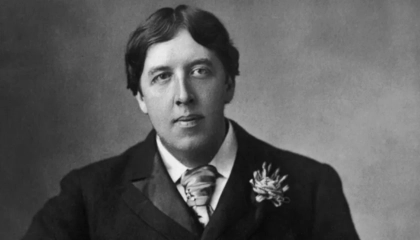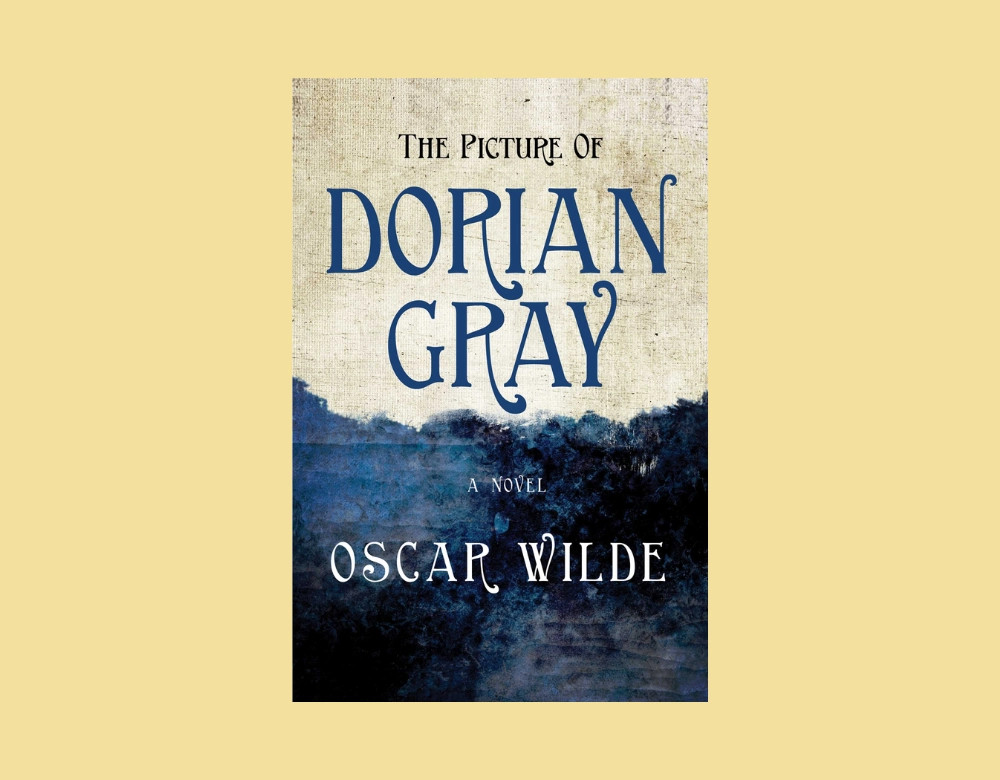Oscar Wilde: The Dandy, The Wit, and The Controversial Genius
So, Oscar Wilde. He wasn’t just a writer; he was a total phenomenon, a brilliant wit, and the absolute embodiment of the Aesthetic Movement in Victorian England. Born in 1854, his entire life was a performance dedicated to the idea that Art for Art’s Sake was the only true religion. He was obsessed with beauty, style, and shocking the rigid moral sensibilities of the conservative late-Victorian society he lived in. And shock them he totally did.
- Publication and Scandal: The novel was first published in a magazine in 1890 and caused an absolute firestorm. It was attacked as immoral and scandalous due to its homoerotic subtext and its celebration of hedonism. Wilde actually had to soften some passages for the book version, but it still caused huge trouble.
- Genre: It’s a blend of Gothic Horror (the decaying portrait is basically a ghost in the attic) and Philosophical Fiction. It uses a supernatural premise to explore very real moral questions. That’s a clever trick.
- Wilde’s Own Tragedy: The novel basically predicted Wilde’s own life a brilliant figure undone by his own reckless pursuit of pleasure and subsequent moral and legal downfall. It’s haunting stuff.
Wilde’s Philosophy: Beauty, Pleasure, and the Price of the Soul
Wilde’s core philosophy, which he explores through the totally cynical and witty Lord Henry Wotton, is Aestheticism taken to a destructive extreme. Aestheticism says the pursuit of beauty and intense sensory experience is the highest goal in life. But Dorian Gray proves that if you pursue beauty only, without any morality or consequence, it totally ruins everything.
| Core Philosophical Theme | What it Means (The Gist of It) |
| Aestheticism vs. Morality | The novel sets up a massive experiment: what happens if a man (Dorian) is allowed to live a life totally dedicated to pleasure and beauty, free of any moral consequence? Answer: Absolute spiritual corruption. |
| The Surface and the Soul | Dorian retains his beautiful, innocent exterior, while the portrait, hidden away, absorbs all the ugliness of his sins. This is the ultimate symbol of the deep, dangerous chasm between appearance and reality. |
| The Danger of Influence | Lord Henry’s totally brilliant but destructive maxims (like “the only way to get rid of a temptation is to yield to it”) act as poison on Dorian’s impressionable young mind. The book is a warning about who you listen to, seriously. |
| The Price of Eternal Youth | Dorian gets his wish eternal beauty. But the consequence is a total inability to feel genuine emotion (love, pity, guilt). He sacrifices his humanity for his looks, which is the worst trade ever. |
Required Reading: Why Wilde’s Wit Still Cuts Deep

Why University Students Must Engage with This Text
If you’re studying Victorian culture, ethical philosophy, or the history of art, Oscar Wilde’s The Picture of Dorian Gray is totally essential. It stands as the definitive literary document of the Aesthetic Movement and provides a blistering critique of Victorian hypocrisy a society that pretended to be pious but was obsessed with secret sins.
It is absolutely crucial for students because:
- Paradox and Epigrams: Wilde’s dialogue is packed with brilliant, complex paradoxes (“There is only one thing in the world worse than being talked about, and that is not being talked about”). Analyzing this shows students how wit can be used as a profound tool for philosophical critique.
- Gothic Convention: It takes the traditional Gothic elements (the secret, the decaying house, the terror) and internalizes them. The horror isn’t the ghost outside; it’s the moral corruption rotting Dorian’s soul. That’s a huge shift in the genre.
- The Artist’s Responsibility: The character of Basil Hallward (the painter) represents the traditional view that art should be moral. His murder by Dorian is a tragic symbol of what happens when the pursuit of amoral beauty destroys its creator.
What to Read Next: Further Deep Dives into Victorian Hypocrisy
Once you’ve wrestled with the cynical glamour of Dorian and Lord Henry, you’ll probably want to explore other works that deal with the dark side of Victorian morality and hidden desires.
| Recommended Reading | The Direct Connection to Wilde’s Themes |
| The Strange Case of Dr. Jekyll and Mr. Hyde (Robert Louis Stevenson) | Published just before Dorian Gray. It explores the concept of the respectable man hiding a terrible, amoral secret. It’s the moral-versus-immoral struggle, just split into two physical bodies instead of one man and a portrait. |
| Great Expectations (Charles Dickens) | Explores the themes of class, ambition, and the corruption of a young man (Pip) by the allure of money and status. It deals with moral decay, though in a different, less aesthetic, context. |
| Salomé (Oscar Wilde) | Wilde’s one-act play. It’s an incredibly intense, beautiful, and shocking work of pure aesthetic drama, focusing on the obsessive pursuit of beauty and desire, which perfectly mirrors the themes in Dorian Gray. |
When a Book Becomes a Mirror: Dorian Gray’s Stage Life
The Theatrical Power of Wilde’s Moral Showdown
The influence of The Picture of Dorian Gray on film and theatre is huge, mainly because the novel is essentially a three-act play built around three incredible, complex characters (Dorian, Henry, Basil) and one absolutely stunning visual symbol (the portrait). The sheer drama of eternal youth confronting the horror of its own soul is pure stage gold.
It established the visual archetype of the decadent, morally corrupt English dandy and the tension inherent in a secret that, if revealed, would totally destroy a person’s life.
- On Direction: Directors often use the physical portrait as a massive, haunting presence, sometimes using special effects to show the immediate, terrifying decay when Dorian commits a new sin. The portrait is practically a silent, judgmental character.
- Performance: The actor playing Dorian Gray has the impossible task of remaining visually beautiful while conveying total, cold-hearted spiritual emptiness. The performance hinges on showing the horrifying gap between his face and his soul.
Key Adaptations: Dorian Gray Across Media
The story’s unique blend of beauty and horror ensures it’s constantly being revisited.
| Adaptation Type | Key Example/Details | Why It’s Famous/Relevant |
| The 1945 Film | Directed by Albert Lewin, starring Hurd Hatfield. Iconic for its use of color. | Famously shot in black and white, but the portrait itself was shown in dazzling Technicolor when revealed, highlighting the monstrous difference between the two realities. |
| The 2009 Film | Directed by Oliver Parker, starring Ben Barnes. A more modern, visually explicit take on the hedonism and psychological unraveling. | Showed how the themes of vanity, fame, and self-destruction are totally relevant to the 21st-century’s obsession with image and celebrity. |
| Stage Plays and Musicals | Often adapted for the stage, focusing heavily on the witty, poisonous dialogue between Lord Henry and Dorian, which is Wilde at his absolute best. | Proves that the philosophical core not just the gothic horror is strong enough to carry a full theatrical production. |
Conclusion: Dorian Gray’s Enduring Legacy of Self-Destruction
So, we finish our look at Oscar Wilde’s The Picture of Dorian Gray. Why does this shocking, beautiful, and deeply unsettling book remain so essential? Because it’s the ultimate statement on the unbreakable law of consequence. You can dodge the police, you can hide from your friends, but you can’t, ever, hide from your own soul.
- Wilde permanently exposed the hypocrisy of a society that valued appearances over genuine morality.
- The book’s final, devastating truth is that Dorian only finds peace (and death) when he tries to destroy the evidence of his soul (the portrait), proving that the soul’s truth, however ugly, cannot be annihilated by the self.
It’s a permanent, beautiful, and utterly chilling warning: You can make your life a work of art, but you can’t escape its moral price.

